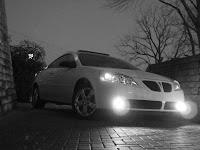The new E55 AMG wagon packs power of 469 horsepower & 0-to-60 mph
times of four.6 seconds with its five.5-liter supercharged AMG V8 engine. It's
high-performance four-wheel disc brakes with oversize perforated &
ventilated rotors with multi-piston calipers.
The exclusive new wagon also comes with AMG aerodynamic bodywork with
AMG 18-inch alloy wheels with staggered tires. Inside, black Birdseye maple
trim is standard, as well as special AMG gauges & sport seats completed in
nappa leather.
Air suspension from the S-Class, called Airmatic DC (for Dual Control),
is standard on the E55 AMG models. Airmatic suspension makes use of sensors
that monitor road conditions, driving style & cornering forces to be
positive that the process always chooses the best air spring & shock
absorber settings. The process can switch between different damping profiles in
a fraction of a second, & the driver can also select from pre-set
suspension response programs.
Standard to the E55 AMG wagon are four-zone climate control that allows
different temperature settings for the rear outboard passengers as well as the
driver & front passenger. Also standard on the both the E55 AMG wagon &
sedan models is a harman kardon Logic 7 audio process that features
seven-channel surround sound, concert-quality output & 12 high-end
speakers.
A used sports suspension for the CLS55 AMG that is based on the
Mercedes-Benz semi-active air suspension with giant vented & perforated
disc brakes carryover staggered 19-inch wheels with 255/35 tires in front &
285/30 at the rear. To help handle all the power, the ESP process can apply the
brakes on wheel to transfer torque to the wheels with better traction,
achieving much the same effect as a limited-slip differential.





